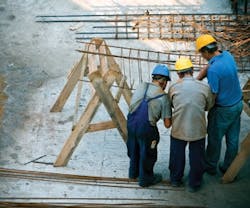LEED-EB Outpaces New Construction as Researchers Identify Green Building Risks
LEED-certified buildings have an injury rate 9% higher than traditional construction projects, finds a study by the University of Colorado.
The research discovered design and construction methods commonly used to achieve LEED certification can result in decreased worker safety. Published in the Journal of Construction Engineering and Management, the study identified 12 of 49 LEED credits that have a greater frequency of injuries or exposure to dangerous environments.
Increased risk factors were largely associated with construction waste recycling, renewable energy installation, and projects targeting the heat island effect, including:
- Recycling construction materials caused a 36% upsurge in lacerations, strains, and sprains.
- Roofs with renewable energy had 24% more falls to lower levels.
- Reflective roof membrane installation increased the chance of eye strain by 19%.
- Innovative wastewater technologies can increase exposure to harmful substances by 14%.
By contrast, respondents indicated that outdoor air delivery monitoring systems and low-VOC materials reduced risk levels during construction.
The study specified that the associated problems with green buildings could be a result of emerging construction methods new to the industry, ineffective construction planning or execution, or an inherent risk in the design elements.
For credits with higher risk levels, owners can work closely with their design firm to proactively mitigate any complications.
“Managing these risks is likely to require safety considerations during design and planning, more efficient communication among designers and constructors, and more effective safety planning and management during construction,” the study concludes.
